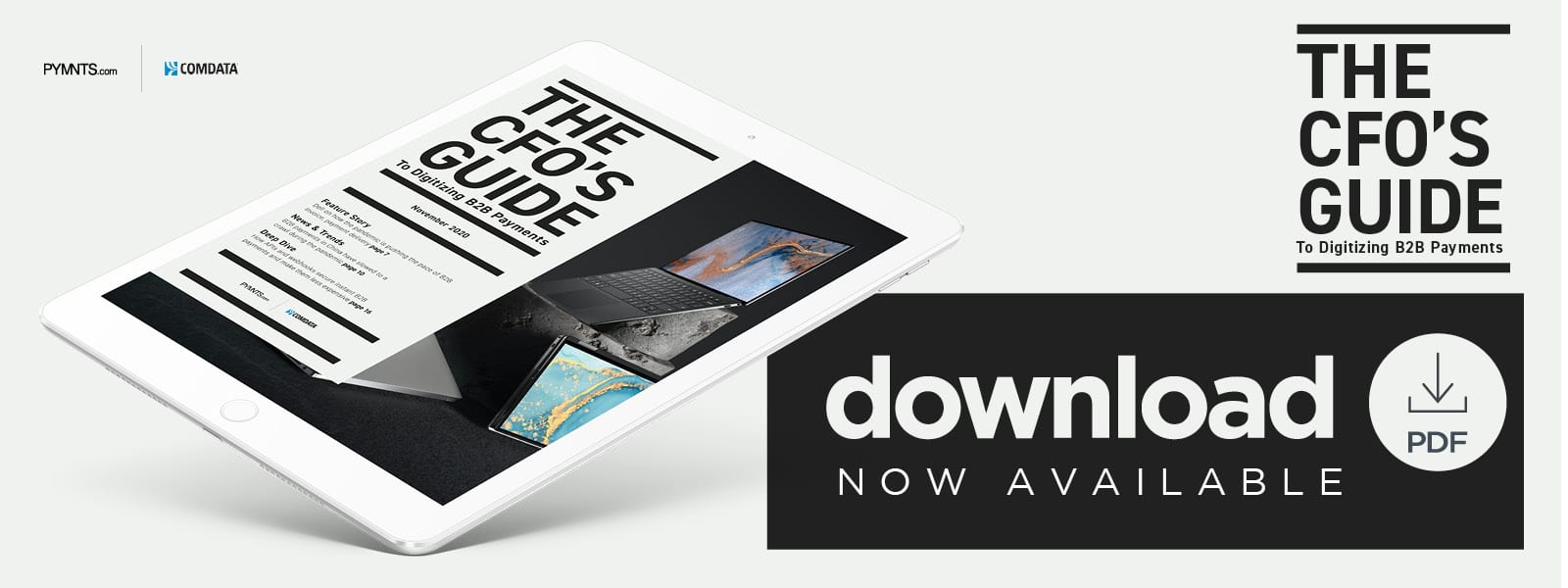Dell On How The Pandemic Is Pushing The Pace Of B2B Invoice, Payment Delivery

Getting paid instantly begins with delivering invoices in real-time, says Kim Vodicka, vice president of commercial operations at Dell Financial Services. In the CFO’s Guide To Digitizing B2B Payments Report, Vodicka explains how application programming interface (API)-based integrations between vendors’ AR systems and buyers’ AP systems can take the sting out of invoicing.
Companies are making significant changes during the COVID-19 pandemic as they work to move past its disruptions and restore smooth operations. Business-to-business (B2B) payment practices are undergoing some of the most notable shifts as corporate buyers and sellers seek new transaction methods and tools to help them pay and be paid quickly. Old-school paper-based payment and billing methods have therefore become too cumbersome for most businesses with employees working remotely, and many are finding it impossible to meet payment deadlines while relying on these traditional tools.
The strains of operating during the pandemic are prompting companies to modernize their accounts payable (AP) and accounts receivable (AR) processes to ensure timely payments, said Kim Vodicka, vice president of commercial operations at Dell Financial Services, a division of Dell Technologies that provides financing solutions to businesses’ corporate and consumer clients. Vodicka recently told PYMNTS about how firms’ B2B transaction strategies are shifting, including how business clients are adopting new AP technologies to streamline and accelerate payments and how companies like Dell are responding with AR modernizations.
Digitizing AP Processes
Most businesses capable of pivoting to remote operations during the pandemic did so immediately, closing their offices and having employees work from home to ensure their safety. This shift has caused disruptions for enterprises that were long used to on-premises AP operations, however, and Vodicka said many large companies struggled to reliably meet vendors’ payment deadlines while managing these operational adjustments.
Such hurdles only doubled for buyers that traditionally relied on paper checks to make vendor purchases. Their AP departments were faced with finding new ways to print and send the documents in a timely manner — or abandon the method altogether. Vodicka said many companies have decided that check-based payments are untenable and that more modern transaction tools are needed.
“Many have had to quickly transition to electronic payment methods,” she said.
Corporate buyers now want to pay merchants via methods like automated clearing house (ACH) and wire transfers as well as set up automated recurring payments, Vodicka said, though these payment digitization efforts represent only one step in a larger AP modernization push for many businesses. These firms are also looking to process invoices faster and more efficiently, and they are adopting automations that can rapidly interpret invoice-related information and flow it into their systems.
“Many companies are choosing one of many options for automated processes offered in the market in which electronic invoices are received and validated using technology such as [optical character recognition], robotics and other advanced automation,” Vodicka said.
AP teams that can reduce the time spent analyzing and managing invoices as well as typing up billing data will have more efficient, swifter processes, she noted. These processes can help them avoid losing track of invoices and make it easier for them to complete their approval and reconciliation procedures to meet payment due dates.
Ripple Effects: AR Modernization
Corporate buyers’ focus on delivering electronic B2B payments and streamlining invoice handling can also prompt changes in their vendors’ and suppliers’ operations. Sellers are likely to find that accepting various digital payments and seamlessly delivering billing information is key to pleasing clients and getting paid quickly, Vodicka said. That means leaving old-fashioned AR methods behind, as many corporate clients no longer want to receive invoices in the mail.
“It is no longer enough to provide a static, template-based invoice via the mail or PDF,” she said.
Most buyers instead prefer to have digital access to invoicing information whenever they require it. Vendors can respond by providing APIs that connect buyers’ AP platforms with sellers’ AR systems, enabling the former to easily view billing details. Vendors that can make it easier for clients to understand their obligations are likely to get paid faster.
“APIs are becoming a very common request in the payment space,” Vodicka said. “The more information and flexibility we can provide the customer about their assets and amounts due, the more able our customers are to make on-time, accurate payments.”
The pandemic has forced many companies to recognize legacy AP and AR systems’ inefficiencies, prompting a new push toward digitization and automation. Late payments are becoming more and more painful, leading B2B buyers and sellers to embrace tools that help them boost the pace of their transactions.

